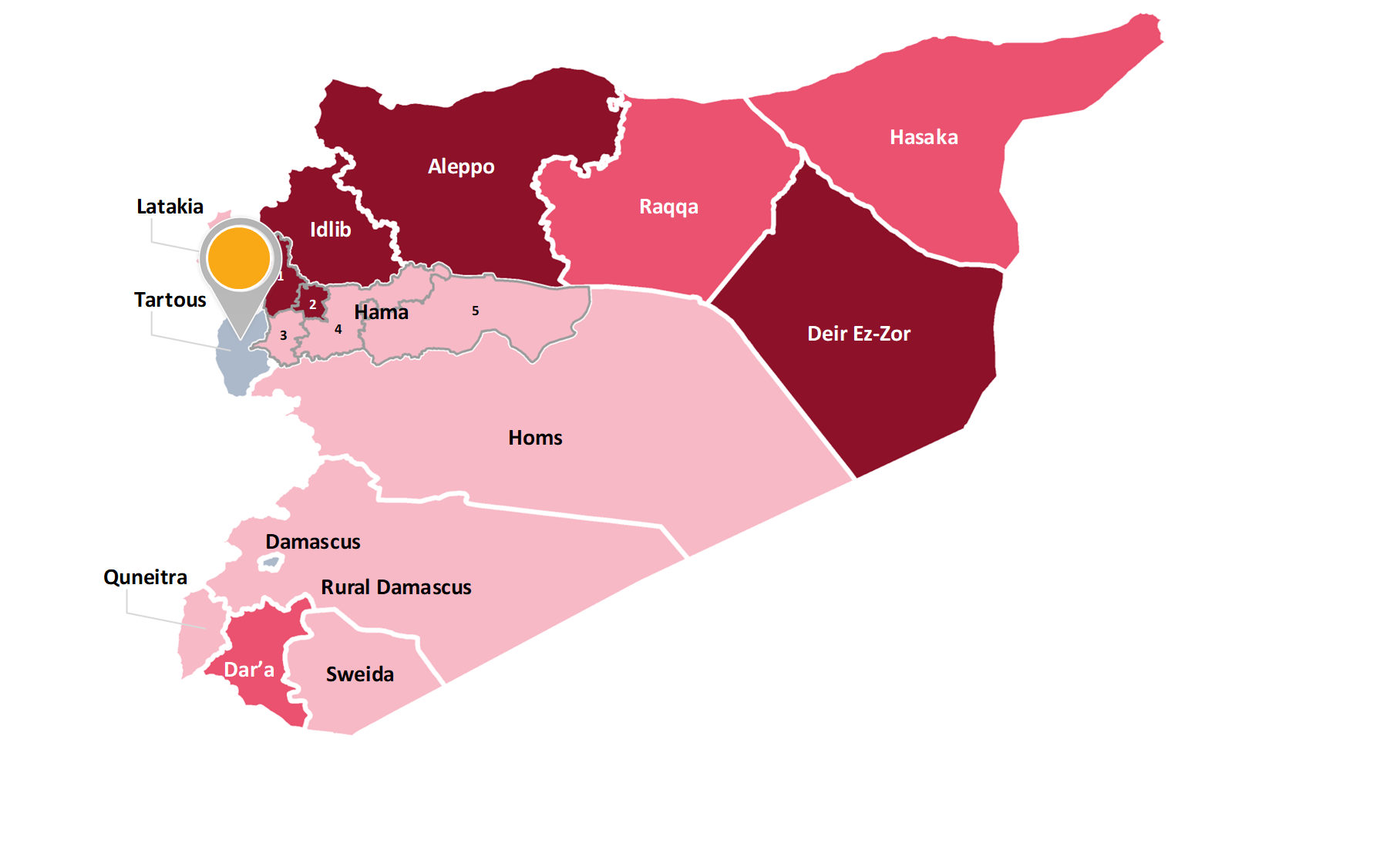[Main COI reference: Security 2020, 2.5.]
The governorate of Tartous borders the Mediterranean Sea to the west, the governorates of Hama and Homs to the east, Latakia to north and Lebanon to the south. The governorate is divided into five administrative districts: Banyas (Baniyas), Sheikh Badr, Dreikish, Safita, and Tartous. The Syrian Central Bureau of Statistics estimated the population of Tartous governorate at 1 114 000 as of 2016. Alawites constitute 80 % of the governorate’s population, followed by Sunni Muslims and Christians (10 % each).

Russian forces have a strategically located naval base in Tartous governorate. In the beginning of October 2016, Russia deployed S-300 surface-to-air-missiles to Russia’s naval base at Tartous. Under the deal signed with the GoS on 18 January 2017, Russia started establishing a permanent military presence at naval and air bases in Syria’ by expanding the Tartous naval facility and using the Hmeimim airbase ‘indefinitely’. In June 2019, the port of Tartous was leased to Russia for 49 years.
Iranian militias were reported to be present on the coastal front in Latakia and Tartous as of 2018.
Since the beginning of the conflict in 2011, the governorate of Tartous has largely been controlled by GoS and experienced no major attacks. However, on 1 January 2017, several explosions were carried out by suicide bombers on the seaside promenade area in the city of Tartous, in which two persons, who were believed to belong to GoS forces, were killed. Tartous was the only Syrian governorate in which no pro-government combat deaths were registered in 2019.
ACLED recorded a total of 2 security incidents in Tartous governorate in 2019, of which 1 coded as explosions/remote violence and 1 as violence against civilians. In the first two months of 2020, ACLED did not record any security incidents in Tartous.
In 2019, VDC recorded a total of 2 civilian fatalities while SNHR did not record any civilian fatalities in the governorate. Compared to the official figures for the population in the governorate as from 2016, this represents less than 1 civilian fatality per 100 000 inhabitants.
During January to December 2019, UNOCHA recorded around 10 000 IDP movements to or within Tartous governorate, of which 3 000 were within the governorate and the rest came from Aleppo, Latakia, Hama and Damascus governorates. Around 1 000 IDP movements were recorded during the year from Tartous governorate to Latakia governorate. Tartous received no return IDP movements, while 3 000 IDPs left Tartous to return to other governorates, including about 2 400 returning to Homs.
There were no major damages due to the war in Tartous governorate. However, in 2020 the use of the ports of Tartous and Latakia for transit has practically ceased, although the conflict has not affected the ports directly.
|
|
Looking at the indicators, it can be concluded that indiscriminate violence is taking place in the governorate of Tartous at such a low level that in general there is no real risk for a civilian to be personally affected by reason of indiscriminate violence within the meaning of Article 15(c) QD. However, individual elements always need to be taken into account as they could put the applicant in risk-enhancing situations.
|
